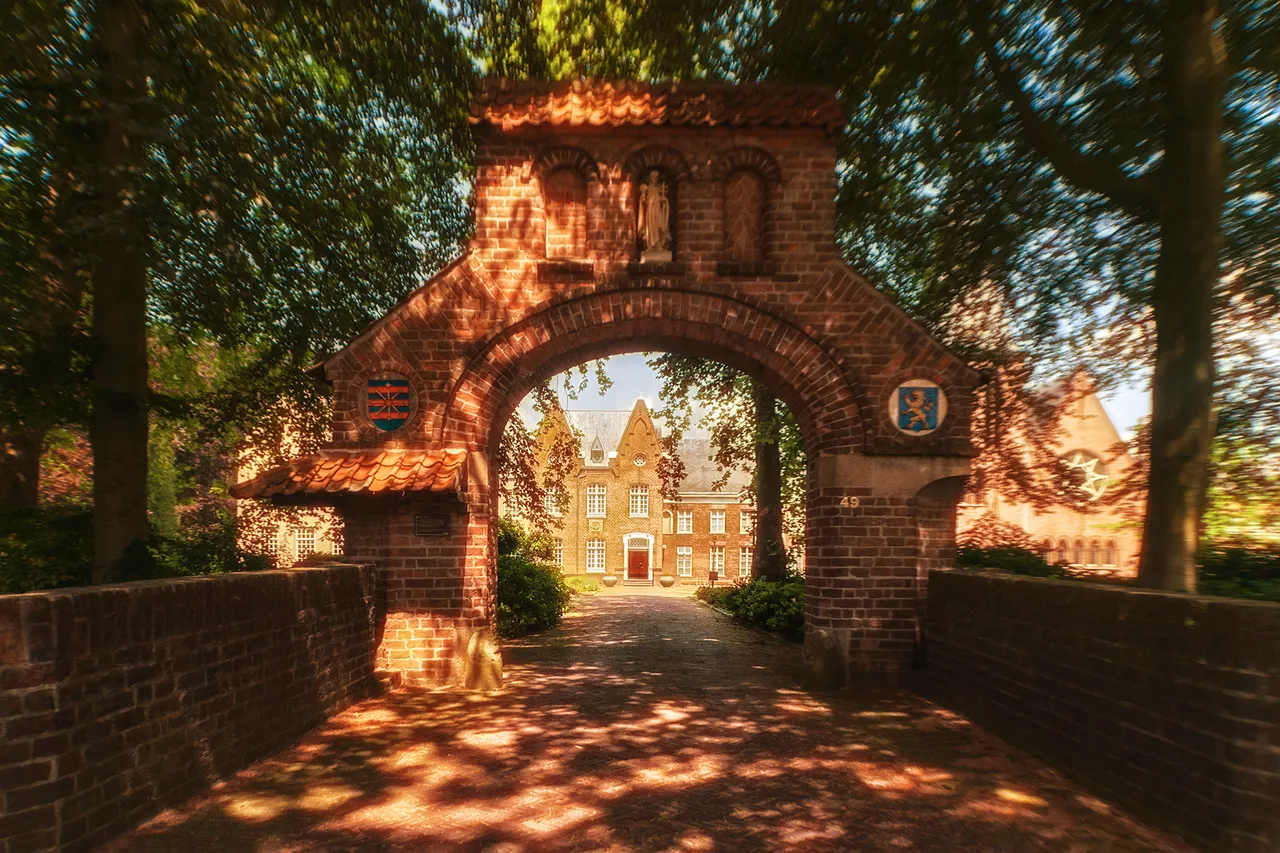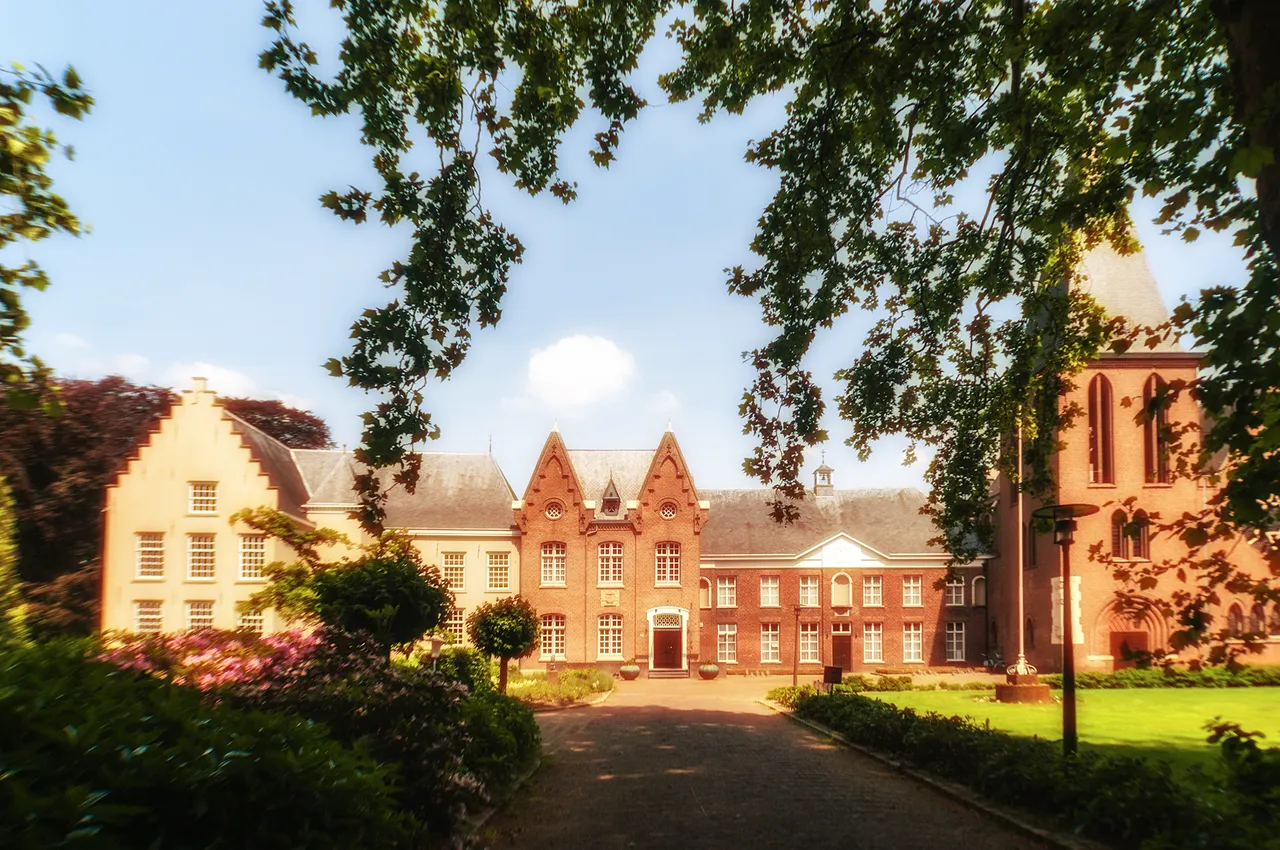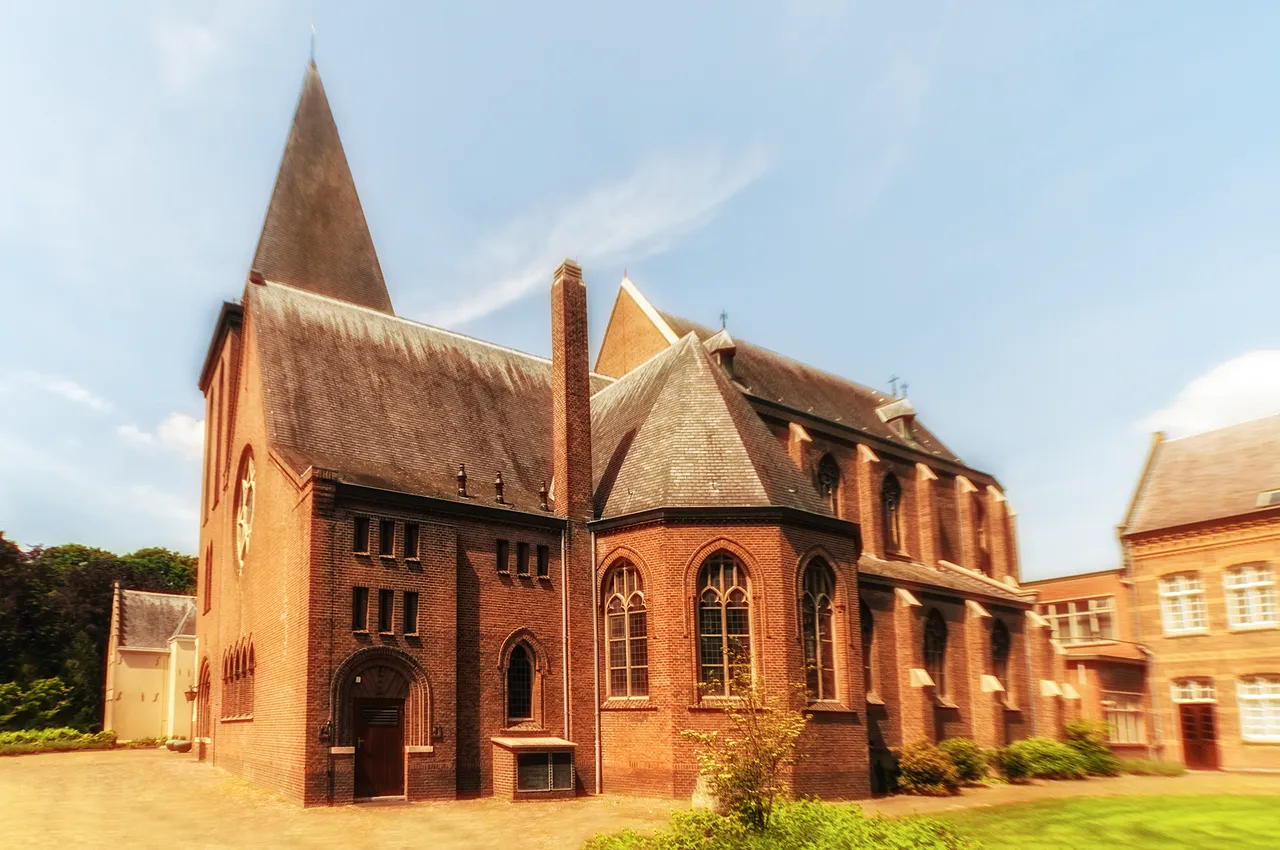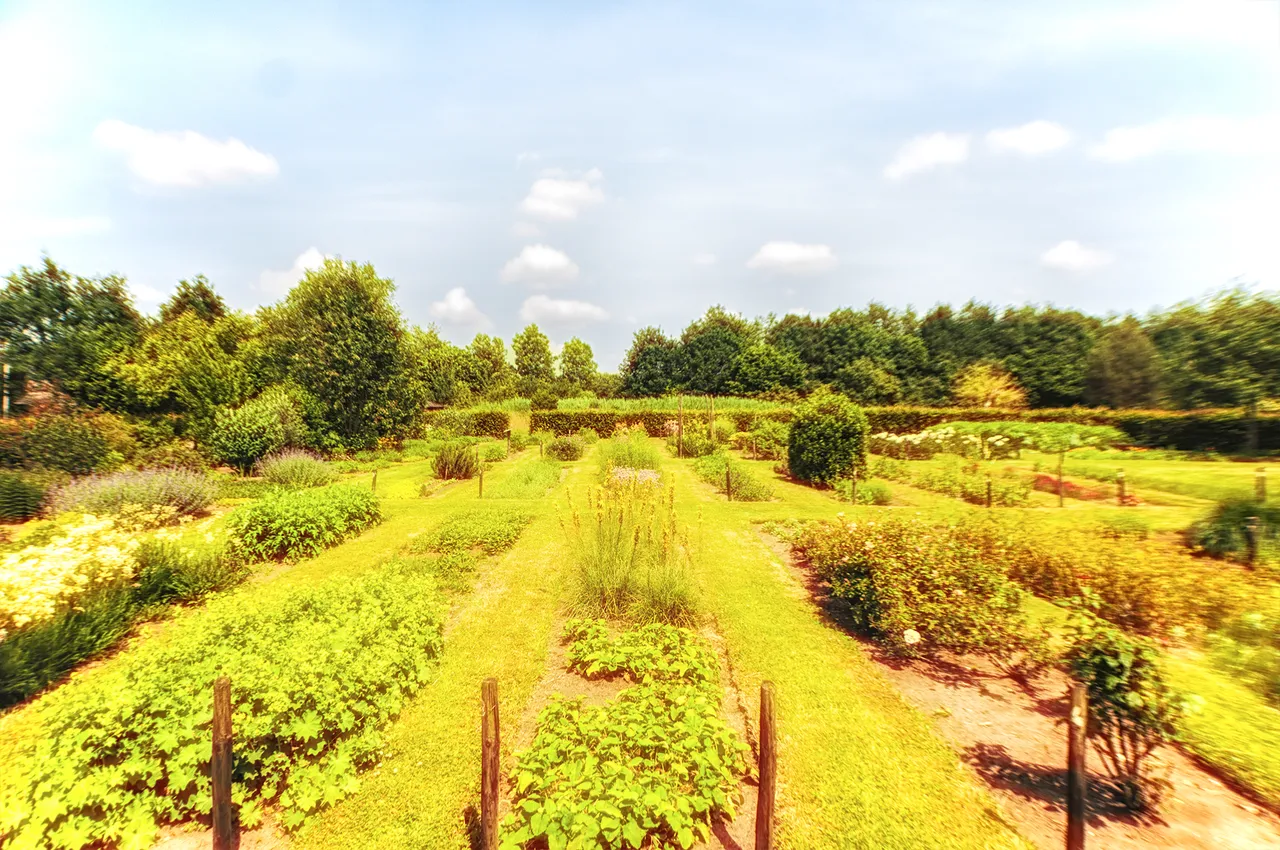When we moved to Heeswijk Dinther some 3.5 years ago, we did not know the place at all. We had no ties with it, there was no family, and I might have been there 2x in my life before we went to live there.
But soon after we came to live here we discovered that Heeswijk Dinther still has quite a bit of history. And also interesting objects that have really stood the test of time. Such as, for example :
Berne Abbey!
BERNE ABBEY GATE

Fulco van Berne.
The origins of the Abbey of Berne were in 1134 in the Gelderland town Berne aan de Maas. In this time it is just called Berne. Knight Fulco van Berne is the founder of the Abbey. The foundation came because knight Fulco was chased, could not escape, was surrounded on all sides ... and at that moment in despair he had made a promise to God. If he could escape his enemies, he would make a castle of his castle in Berne. Afterwards, with horse and weapons thrown into the Meuse and thus managed to escape. In the museum of religious arts in Uden there is also a canvas that shows this event. Fulco, very grateful for his escape, fulfilled his promise by establishing the Abbey of Berne in 1134, with which the Abbey of Berne is also the oldest Abbey in the Netherlands.
Augustinians and Norbertines.
Fulco starts his Abbey with Augustijnen from another Abbey but this creates a great chaos Fulco is not satisfied with and he sends back the Augustinians. This seems to be an early end of his Abbey but Fulco does not give up, he keeps his promise and his second attempt is with the order of Prémontré, also known as Norbertines. Fulco gets an abbot and a couple of monks from a nearby abbey to man the castle in Berne, and to ensure that this time will be peaceful and without chaos Fulco decides to join the order.
Fulco's wife chooses a religious life at the Norbertine monastery in Altforst, which is linked to Fulco's Abbey.

FRONT BERNE ABBEY

Different Guardians.
The Abbey of Berne has always had great names such as Guardians, who supported the Abbey financially and gave the Abbey their protection. The first Guardians were the Counts of Cleves, and in 1248 the Dukes of Brabant took over the tasks. They in their turn handed over the tasks to the Counts of Holland, and the last known Guardians were registered as the Dukes of Gelre.
Expansion.
The Abbey changed its way of working after more than a century. Where the Abbey was strictly monastic at first, this changed and their vision shifted too. Where it first revolved around 'Working IN the Abbey', this changed to 'Working OUTSIDE the Abbey'. The Abbey is now entering a new phase and both the spiritual and secular authority of the Abbey in the region is growing. Priests are sent to parishes and the parishes are often given to the abbey with all additional rights. This is how Berlicum already got in possession of the abbey in 1240. Heeswijk follows in 1284. Later in 1285 Oudheusden, Elshout, Hedikhuizen, Vlijmen, Engelen and in 1369 finally Bokhoven. In 1613 follows Lithoijen, Haarsteeg in 1846 and in 1948 Middelrode is entrusted to the concerns of the abbot of Berne. Finally, the Parish Heikant-Quirijnstok in Tilburg was transferred to the abbey in 1964.
In addition to parishes, the abbey has six outbuildings. These were three larger outcrops, also called proosdies, at Altforst, Maarsbergen (both donated by Fulco in 1134) and Honswijk (founded in 1265) and three smaller Bernheze outcrops (donation in 1196), Gaal and Mun (around 12th century, near Schaijk) and Babyloniënbroek (about 13th century).
Looting.
In 1572 the Abbey in Berne was looted and then set on fire. The Abbey remains empty, but monastic life is not over. The Abbey goods expire to the States of Holland, but the Norbertines have since withdrawn in 's-Hertogenbosch, and later in Uden, before they find shelter in Vilvoorde near Brussels, after which the Abbot Jan Moors settles in 1629 in Heeswijk, where the abbots of Berne have a little castle. The Castle Berne.
Definitive Establishment Heeswijk.
After having lived safely in Vilvoorde for 150 years, the French Revolution put an end to it and for a long time there is no real abduction life. It seems as if Fulco's legacy is lost. The Norbertine pastors live in all parishes and try to lead an abbey life, but it must remain hidden because it is not accepted. The Castle in Heeswijk has always been inhabited by the Norbertines and eventually in 1857 the Norbertines feel that they are more accepted again, and they want to start a real Abbey-life again. Now they choose The Castle in Heeswijk as their final location, and soon start with building a new church.

CHURCH BERNE ABBEY

Jump in time.
We make a big leap in time. Now that it is clear how the Abbey has arisen, the past of the Abbey and the fact that the Abbey Life has survived many far-reaching changes, it is time to look at the present. For does an Abbey still have the right to exist at this time? Does Monastic life still exist? And is there actually still a monastic life? What does the Monastic life look like today?
The Abbey appears to be able to exist well during this time. Where about 275 Norbertines lived in the heyday of the Abbey, some twenty Norbertines now live there. And they really live there according to the Monastic life. 3 times a day they have prayer and singing. But in addition, they certainly went with the times. They have woven the Religion they profess in this modern era with their own website, they have their own media company, they have their own bookshop where you can buy local products as well as books. Furthermore, the Abbey has its own Berne Abbey beer. And if you want to reflect for yourself, then that is also possible. You can namely Stay at the Abbey.
I am not a believer myself. But can enjoy a beautiful environment, a beautiful building, the peace and quiet, a good beer to drink and a nice garden to walk. The Monastic life is not spent on me, but the peace and reflection you can find there. A short escape from the busy reality of everyday life ... yes that is definitely worth it to me. Just come to yourself and recharge yourself ... that is very possible in the vicinity of:
Berne Abbey.






